When you visit Madagascar, you’re undoubtedly hoping to see some of our most famous wild residents. Whether you’ve seen the animated movie or you’re a massive David Attenborough fan, lemurs have certainly gained prominence in popular culture in recent years. So we’d like to share some of the best places to see lemurs in Madagascar, including many areas we visit during our Madagascar tours.
Whether you join TravPact Madagascar for your dream trip or not, please do remember to employ responsible travel practices during your visit. We are Travelife Certified. That is a standard you can look for when you’re evaluating tour operators around the world for their sustainability practices.
Our ecosystem in Madagascar is both unique and delicate. It is of vital importance that all visitors adhere to these standards to protect our precious wildlife and landscapes. We hope you agree!
Want all the details for your upcoming trip? Start with our comprehensive Madagascar travel guide to get all the information you might need!
For now, let’s chat all about everyone’s favourite Madagascar animal: the lemur.
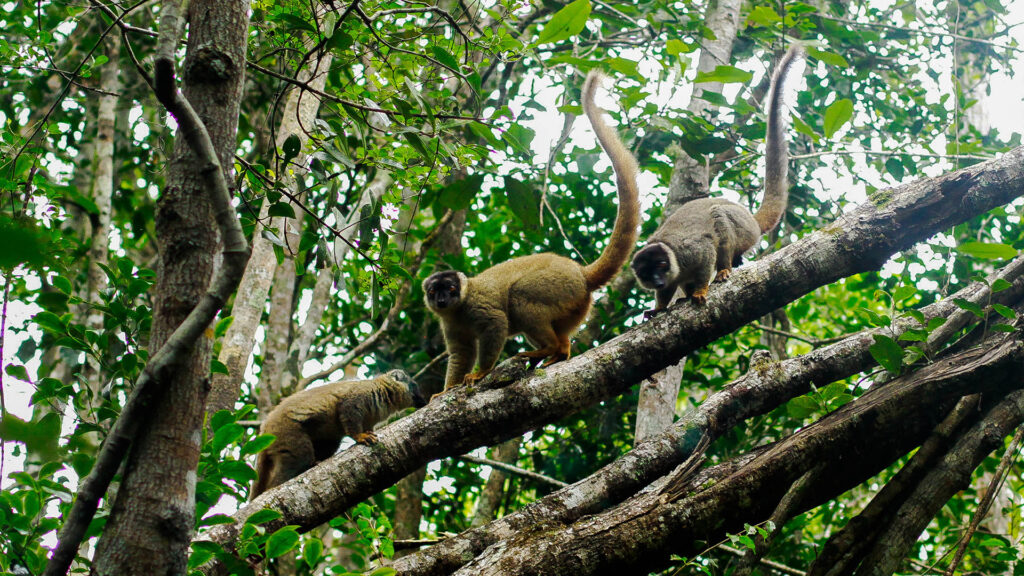
Quick Facts About Lemurs
Lemurs are, sadly, the most endangered group of animals in the world. Approximately 95% of the 111 lemur species are threatened with extinction due to habitat loss, hunting, and animal trade. While we might adore these creatures whilst watching movies and documentaries, we must remember that they are wild and should never be handled nor fed during your visit.
In Madagascar, you can see lemurs across a variety of landscapes. From the rainforests to the dry desert, different types of lemurs make their homes in different spaces across the country.
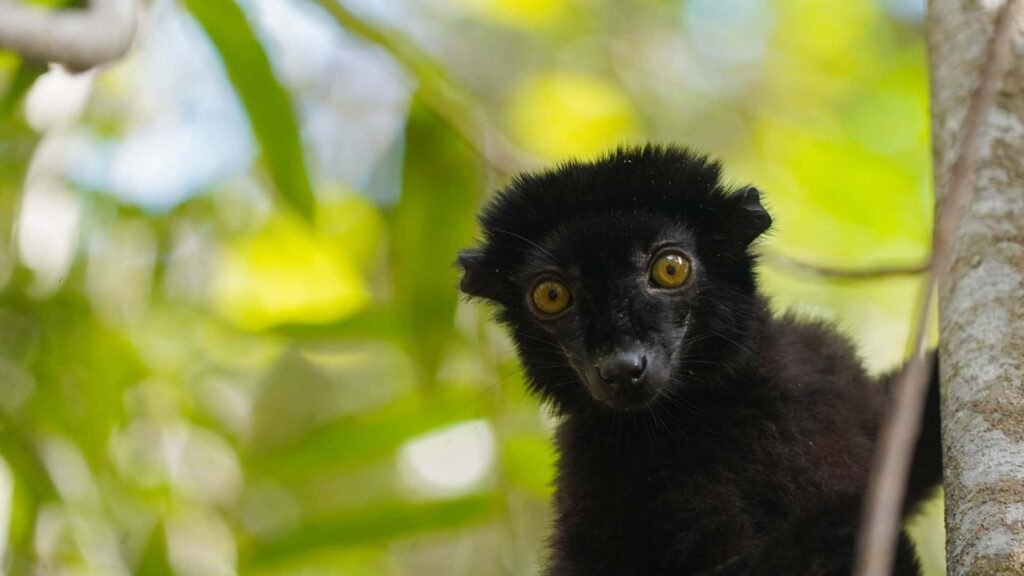

Some lemurs are nocturnal, whilst others are out and about all day long. As with all wildlife sightings, you cannot plan for nor predict exactly where they’ll be on any given day. However, there are more reliable places to visit to see lemurs once you know their habits and preferences for eating, sleeping, and even playing!
Types of Lemurs You’ll See in Madagascar
There are over a hundred different species of lemur in Madagascar, but some are more easily spotted than others. We’ll go through the more common types of lemurs and the best places in Madagascar to see them.
Ring-Tailed Lemur
Perhaps the most easily-identified lemur in Madagascar, the ring-tailed lemur (or Maki) can be found in various parts of the country. They spend lots of time on the ground and they are out and about during the day. That makes them easier to spot than some other types of lemurs.
Best places to see ring-tailed lemurs in Madagascar:
Berenty Reserve and Isalo National Park, as well as the community-run Anja Reserve. In the highlands of the Andringitra National Park, these lemurs have grown thicker coats for the colder nights.
We love to support the Anja Reserve! You can visit with us during our 7 Parks of Madagascar 21 Days Tour.
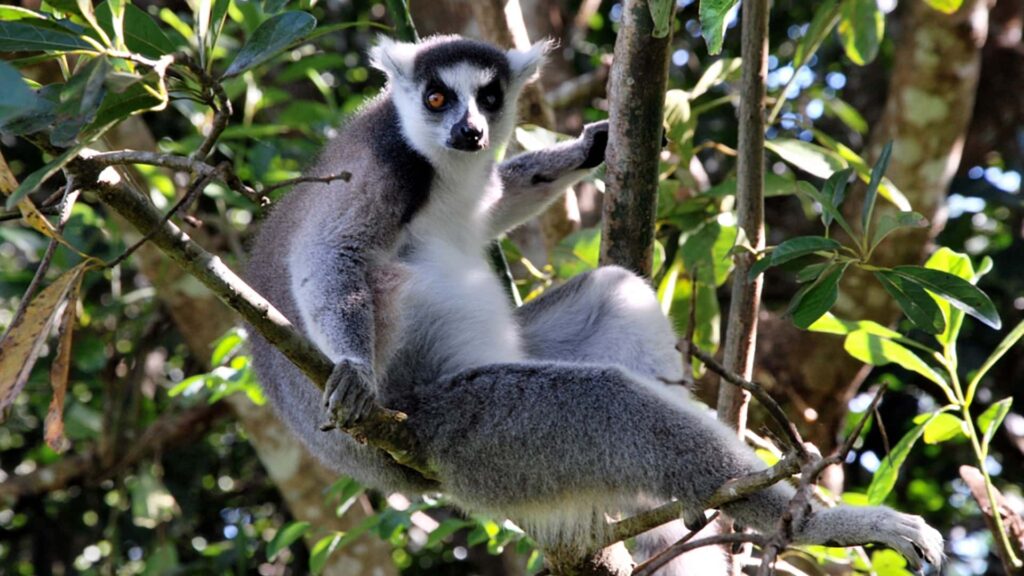

Indri indri
The Indri Indri might be another of the most popular types of lemurs. The largest living lemur at over a metre tall, the indri lives in the forests along Madagascar’s east coast, leaping up to 10 metres between tree branches with their strong hind legs. The indri is perhaps most famous for its very loud song…you’ll never forget it once you’ve heard it!
Best place to see Indri Indri in Madagascar:
Andasibe-Mantadia National Park is actually the only place to see the biggest lemur in the world. Due to its proximity to Antananarivo (the capital city), it’s also a very popular attraction and can get busy. Go deeper and you might also be lucky with sightings of other species like bamboo lemurs, brown lemurs, or woolly lemurs.
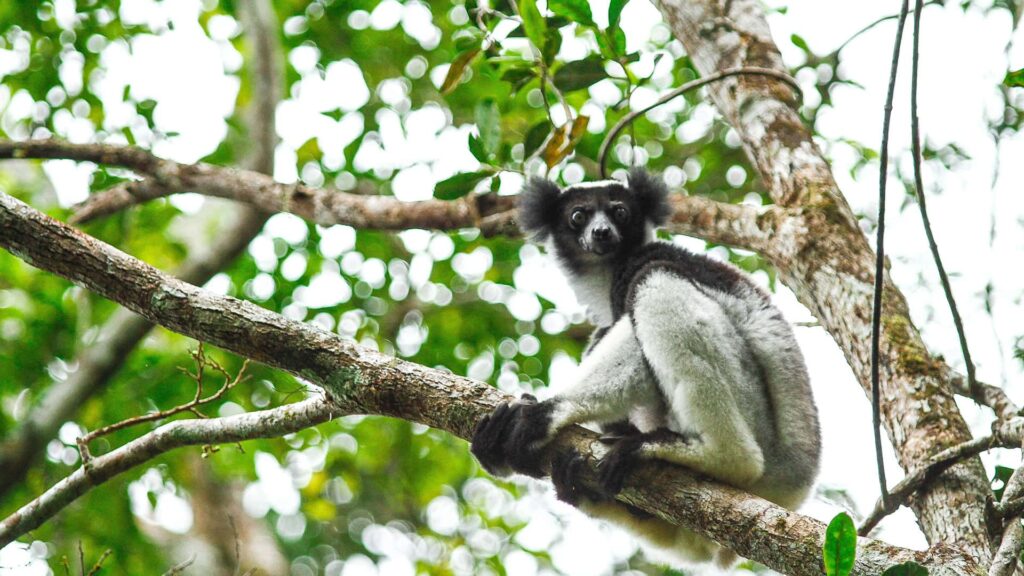

We visit Andasibe-Mantadia National Park on our Madagascar Highlands to Sainte Marie 15 Day Bike Tour.
Blue-Eyed Black Lemur
This critically-endangered species is famous for its stunning turquoise-blue eyes, with males being stark black and females being more red-brown in colour. They were originally classified under black lemurs, but reclassified as their own species only in 2008. They are incredibly rare, having lost most of their natural habitat to human intervention.
Where to see blue-eyed lemurs in Madagascar:
The community-based private Maromandia Park offers the easiest location for spotting these critically endangered lemurs. For those who want a more off-the-beaten-track experience, you can visit Sahamalaza National Park with our partner organisation.
Join our Madagascar Fabulous North 14 Day Tour to visit Maromandia Park for lemur sightings!
Sifaka
There are several types of sifaka lemurs in Madagascar, but you’ll know them by their funny way of walking on the ground. They stand upright with their arms overhead and skip or hop sideways. The Verreaux Sifaka is sometimes called the “dancing sifaka”. These social lemurs live in groups and can be found in the deep south of Madagascar.
Best places to see sifaka lemurs:
You’ll find different types of sifakas across the country, but head to Berenty Reserve to see Verreaux’s Sifaka; Isalo National Park, Ranomafana NP, Andasibe-Mantadia NP, Ankarafantsika NP, or the Tsingy de Bemaraha to spot other sifakas.
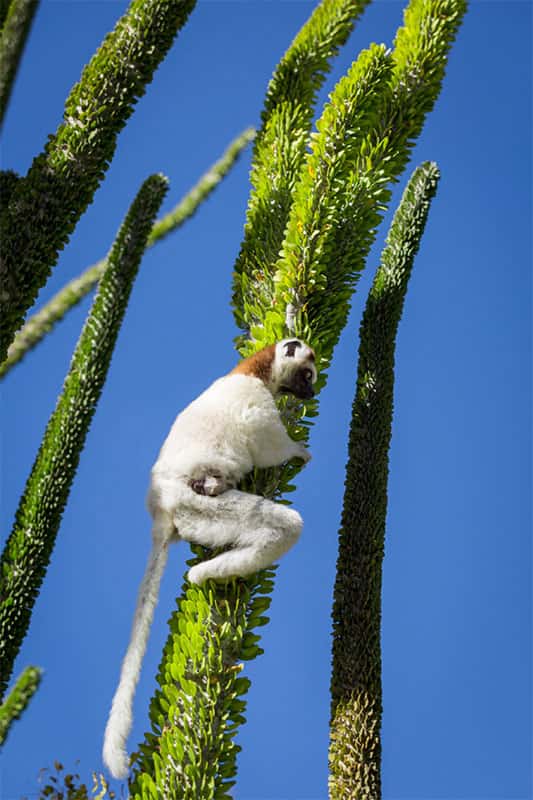

Mouse Lemurs
The smallest kinds of lemurs are mouse lemurs, of which there are quite a variety. You could look for the Marohita mouse lemur, Goodman’s mouse lemur, gray mouse lemurs, Gerp’s mouse lemur, and the world’s smallest: Madame Berthe’s mouse lemur. Note that mouse lemurs are all nocturnal.
Where to look for mouse lemurs in Madagascar:
You’ll be lucky to spot these tiny creatures, although they do enjoy a less threatened status than most other species. Mouse lemurs can be found all along the southern and western coastal regions of Madagascar. Look for them in the Tsingy de Bemaraha, the Spiny Forest of Ifaty, or in the National Parks of Ranomafana, Ankarafantsika, Isalo, Andasibe-Mantadia, or Amber Mountain. Marohita mouse lemurs can only be seen in Marohita Forest, while the tiny Madame Berthe’s mouse lemur can only be found in the Kirindy Forest in western Madagascar.
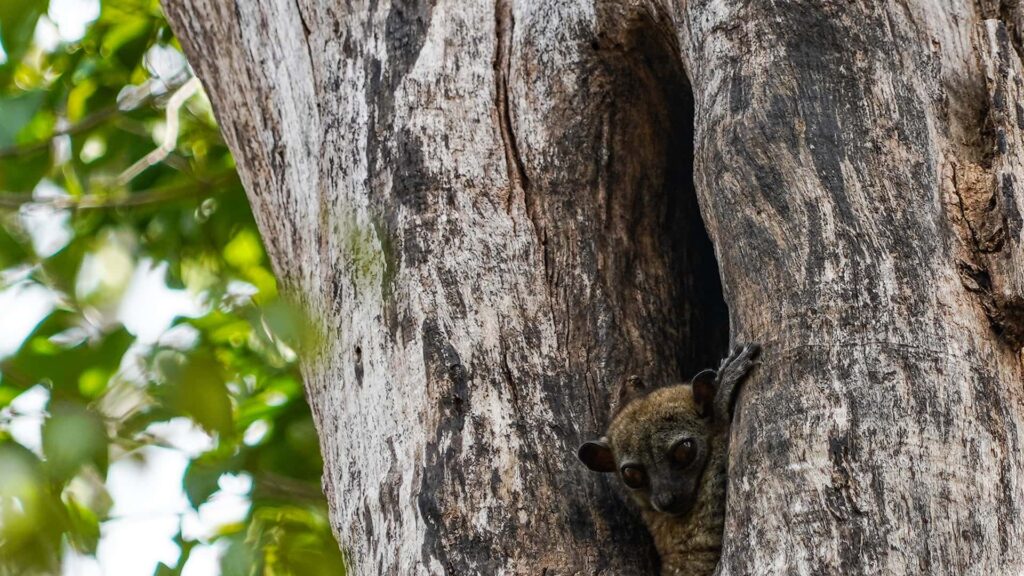

Want to explore the Tsingy de Bemaraha? Check out our Incredible Contrast 20 Day Tour!
Bamboo Lemurs
These lemurs actually eat poison! Bamboo lemurs eat cyanide-filled bamboo stalks and have evolved very tough stomachs to be able to process it.
Best places to see bamboo lemurs:
Ranomafana National Park
Beautiful Ranomafana National Park is a favourite of ours at TravPact Madagascar. Join us on our Secrets of the Well-known National Road 14 Day Tour to visit the Centre ValBio (CVB). This unique research and conservation centre has worked in close collaboration with Madagascar National Parks for decades.
Responsible Travel in Madagascar
As with all responsible travel imperatives, you should never feed or touch lemurs nor encourage behaviour that endangers or harms any wildlife. As responsible tourism operators in Madagascar, we do not bring our guests to places where lemurs are fed or held for photo opportunities. All wildlife should be respected and allowed to continue without our intervention.


If you’re thinking about booking that dream trip to Madagascar, get in touch for a free consultation. We would be delighted to help you sort through the plentiful options.

















This post was truly worthwhile to read. I wanted to say thank you for the key points you have pointed out as they are enlightening.